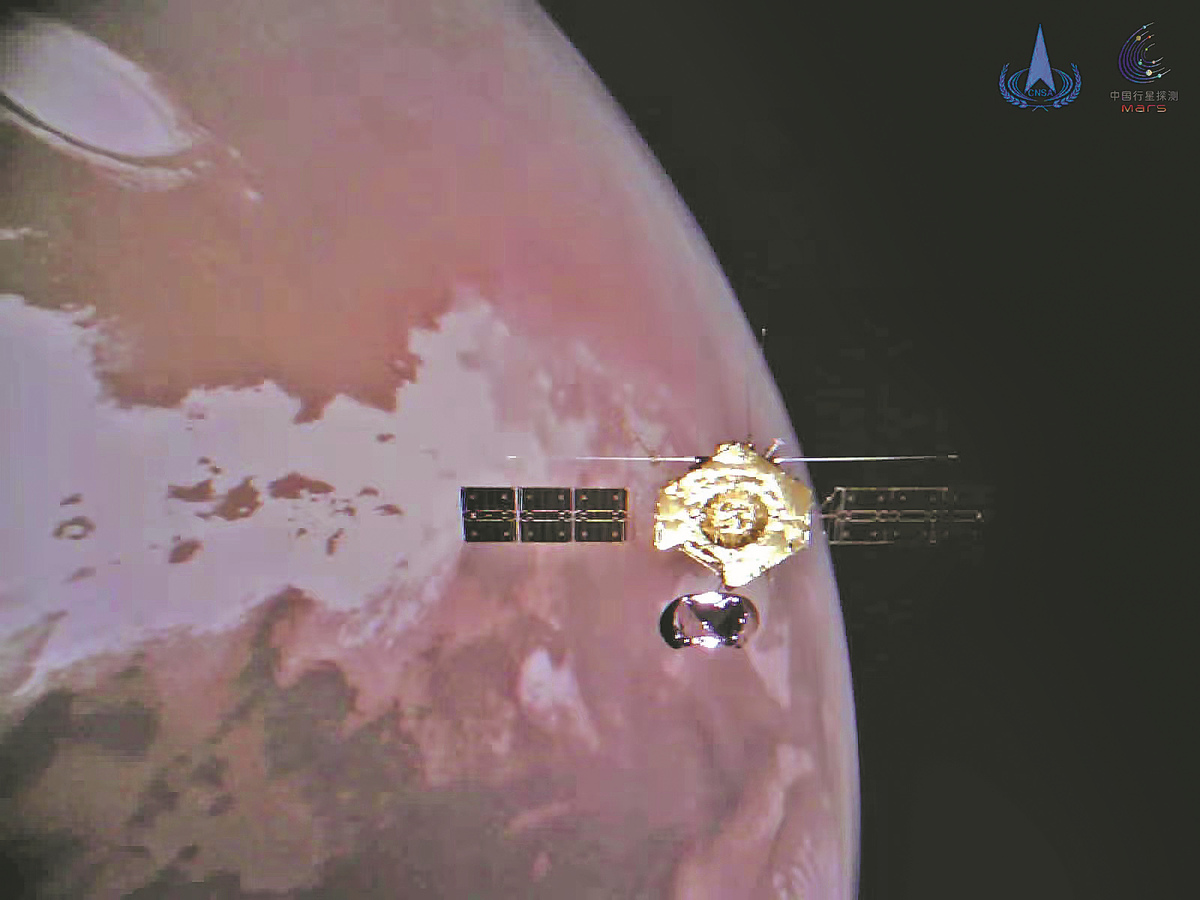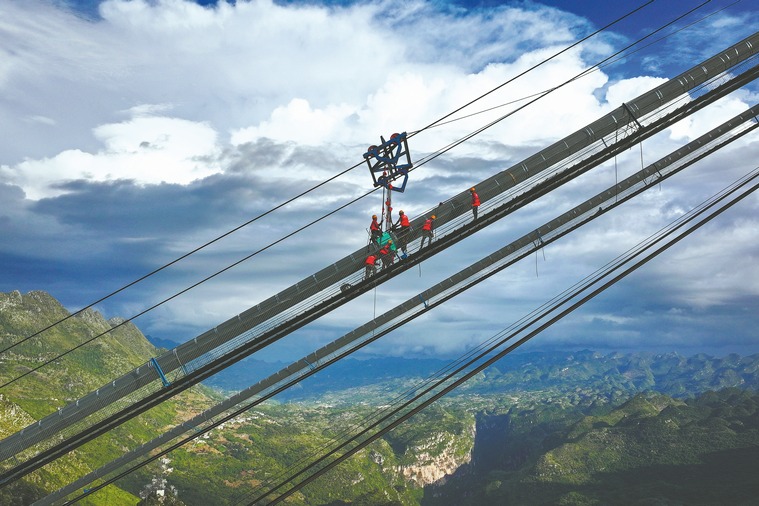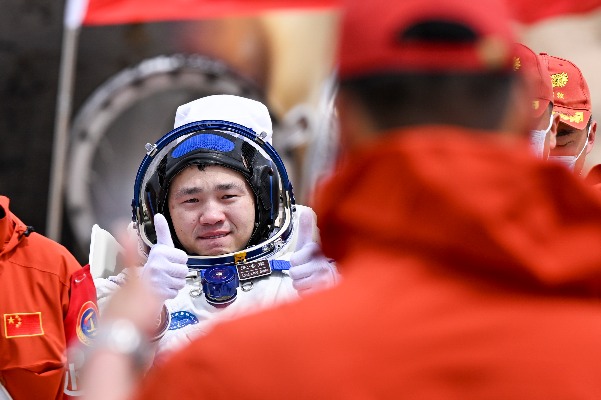Still shooting for the stars
More space missions planned, including a manned trip to the moon and one that would bring back samples from Mars


Chang'e missions
In terms of lunar exploration, China plans to maintain its lead in the field of robotic expeditions with two ambitious missions — Chang'e 7 and 8 — before landing Chinese astronauts on the silver sphere.
Chang'e 7, set for launch around 2026, is tasked with exploring the environment and resources, especially for traces of water, on the south pole of the moon.
The Chang'e 7 probe will consist of an orbiter, a lander, a rover and a small flying probe designated to fly into pits on the lunar surface to look for ice.
Wu Weiren, an academician of the Chinese Academy of Engineering and chief planner of the nation's lunar programs, said: "There are some deep caves at the lunar south pole where we believe water might exist. However, these areas are permanently shaded from sunlight — if exposed to sunlight, the water would vaporize. Under permanent shadow, the water is likely to exist in the form of ice. We want Chang'e 7 to have a flying craft that, after landing, can fly into one or two of these caves for on-site exploration to see if water can be found."
Scientists have explained that the presence of water, in the form of ice, could significantly reduce the costs and time required to transport water from Earth to the moon, thus facilitating the establishment of human presence and long-term activities on the moon.
On the other hand, if water can be found on the moon, it will hold important clues to determining whether life exists on the moon and other planets.
To make the best use of opportunities in the Chang'e 7 mission and better cooperate with international partners to explore the moon, the space administration announced in November 2022 that it would invite international payloads on the Chang'e 7 probe and began soliciting proposals.
Upon ending the solicitation process in January 2023, it had received 18 proposals from 11 countries and international organizations.
Based on the proposals' scientific objectives and engineering feasibility, six payloads submitted by six countries — Egypt, Bahrain, Italy, Russia, Switzerland and Thailand — as well as the International Lunar Observatory Association, have been selected to be carried on the Chinese probe.
After the Chang'e 7 mission, China aims to launch Chang'e 8 around 2028. Chang'e 8 will also land on the lunar south pole to conduct experiments for the in-situ utilization of lunar resources.
Components of the two Chang'e missions will become the basis for an ambitious multinational project initiated by China known as the International Lunar Research Station.
A number of nations, including Venezuela, South Africa and Pakistan, as well as international organizations such as the Asia-Pacific Space Cooperation Organization and the Arab Union for Astronomy and Space Sciences, have signed up to participate in the project.
So far, China has conducted six robotic missions to explore the moon.
The country deployed two rovers on the lunar surface during the Chang'e 3 and 4 missions. It has also retrieved samples from both the near and far sides of the moon via the Chang'e 5 and 6 missions, becoming the first and only nation to have achieved such a historic feat.
Manned moon trip
Having gained rich experience through the robotic missions, China has been moving progressively toward its goal of sending astronauts to the moon around 2030, with all research and construction work advancing as planned, according to the China Manned Space Agency.
The agency said that key components of the ambitious project, including the Long March 10 heavy-lift carrier rocket, the Mengzhou manned spacecraft, the Lanyue lunar lander, the Wangyu lunar suit and the Tansuo crew rover, are currently in the preliminary prototype development phase, and the design work is proceeding on schedule.
Meanwhile, construction of new testing and launch facilities is underway at the Wenchang Space Launch Center in Hainan province. The overall design plans have been finalized for the tracking, telemetry and command systems, as well as landing site infrastructure, and construction work is set to begin imminently, according to the agency.
Once the mission is achieved, China will become the second nation to land astronauts on the moon, significantly boosting its global space standing.
The US successfully conducted six Apollo crewed missions in the 1960s and 1970s, bringing 12 Americans to the silver celestial body.
The country's road map for its first manned lunar expedition involves two Long March 10 launches from the Wenchang spaceport to transport a Lanyue lunar lander and a Mengzhou manned spacecraft to lunar orbit.
After reaching their preset orbital positions, the Lanyue lander and the Mengzhou vessel will rendezvous and dock. Two crew members will enter the lander, which will then undock and descend toward the lunar surface for an engine-assisted soft landing.
On the moon, the astronauts will drive a Tansuo rover to carry out scientific tasks and collect samples. Upon completion of their assignments, they will return to the Lanyue module, which will fly them back to their spaceship waiting in lunar orbit.
In the final stage, the astronauts will carry samples into the Mengzhou spacecraft, which will then undock and carry the crew back to Earth.
To prepare for the sophisticated adventure, China has selected its fourth group of astronauts, who are currently training for lunar landing and surface operations.
Next-generation Beidou
China has planned to establish a next-generation space-based navigation and positioning system by 2035, according to project managers.
The new version of the Beidou system will be "omnipresent, smarter and more integrated", and upon its completion in 2035, there will be Beidou service not only on land and sea, but also in the sky, outer space and deep within the oceans, said Yang Changfeng, chief planner of the Beidou program.
Beidou is China's largest civilian satellite system and one of four global navigation networks, along with the US' GPS, Russia's GLONASS and the European Union's Galileo.
Since 2000, a total of 64 Beidou satellites, including the first four experimental ones, have been lifted on 47 Long March 3 series rockets from Xichang.
In July 2020, the system was declared complete and began providing full-scale global services. Currently, there are more than 50 Beidou satellites in active service, operating in multiple types of orbits.
According to most recent statistics published by the Global Navigation Satellite System and Location-Based Services Association of China, the total output value of the nation's satellite navigation and positioning services industry reached 536.2 billion yuan ($73.8 billion) in 2023, up 7.09 percent year-on-year.
By the end of 2023, more than 500,000 Chinese people had worked at around 14,000 domestic institutes and companies doing business related to Beidou and other satellite navigation and positioning services, according to the association.
zhaolei@chinadaily.com.cn























